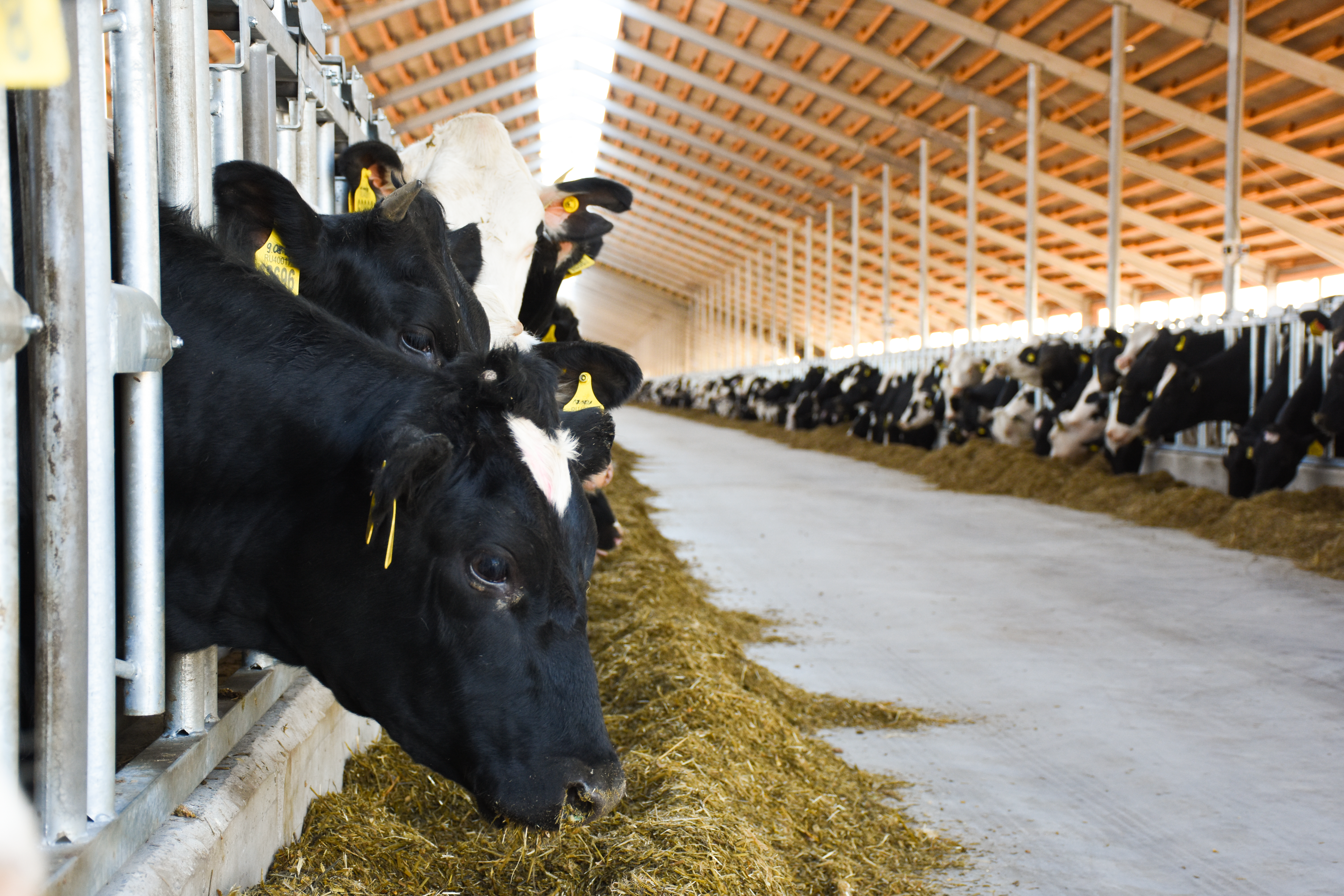The digitization of milk
7 January 2021 News from the Company
Modern dairy farming involves hundreds of interrelated processes. The most important of these is feeding. The quality of the milk as well as the milk yield of the cows depend directly on the right ration, the exact proportions and the timely distribution of the feed. Not so long ago, the feeding process was managed and controlled by humans; today, machines and special software come into play.

The first software for feeding control appeared in the West in the early 2000s. The softwares contain basic functions, but do not fully reflect the production reality in Russia. There are critical points in the programs, but the developers do not correct them.
In mid-2017, the specialists at EkoNiva-APK Holding started developing their own software. It was intended to optimize the entire feeding process, from filling the feed into the feed mixer to the distribution to the animals, and to make the life of the cattle farmers easier. Already at the beginning of 2018, the Eko.Feed software was tested at the Vysokoye dairy complex (EkoNivaAgro, Voronezh region).
"The main expense of any livestock farm is feed costs," says Konstantin Kapiturov, head of the Livestock IT Support Department at EkoNiva-APK Holding. "In order to optimize costs, it is necessary to properly analyze the largest expenses first, and only then the remaining items. With the help of Eko.Feed software, we can do this quickly and as efficiently as possible. “
The diet of cows is quite varied and consists of three components. The basic feed is silage, haylage and hay. If the animals are fed exclusively on it, their health is good, but they do not give much milk. Concentrated feed is the most expensive component in the feed ration. It contains a lot of protein, which is important for high-performance cows both in terms of health and productivity. In addition, the feed ration is supplemented with vitamins and minerals. Cattle farmers enter the necessary quantities of these three components into Eko.Feed and receive the required feed mixture.
"Each of our production units has a senior animal manager who is responsible for feeding," Konstantin Kapiturov continues. "Based on the chemical and structural parameters of the ingredients, he compiles the feed ration and sends it to the respective unit. The livestock manager in the dairy unit takes the feed specifications and enters them into Eko.Feed. He then adds his livestock into the program, and the software optimally distributes the feed to the feed mixers to optimize the feed preparation and distribution processes."
With the help of Eko.Feed, the necessary information is displayed on the tablet PCs installed in the cabs of the feed mixer wagon and the loader. The wagon driver loads the feed into the feed mixer wagon and drives to the distribution. The smart app also assists the driver in optimally using the feed truck. For this purpose, Eko.Feed creates the feeding route and tasks for the work shift based on the set parameters (barns, sections, where and what feed to give to the animals). In this way, the driver saves considerable time and reduces fuel costs.
"Cows are creatures of habit," Konstantin Kapiturov tells us. "For their high performance, we have to take into account the cows' biological clock. In order not to disturb the animals' routine, the employee distributes the feed at the right time in certain sections of the farm with the help of Eko.Feed."
The digitization experts of the EkoNiva Group are constantly developing the Eko.Feed software. In the near future they will change the design, introduce new technical features, expand the possibilities for animal keepers and machine operators. The next big change is the development of the interface between Eko.Feed and the accounting software 1C. For modern large farms, this communication is essential. It will improve the control of feed consumption. With the interaction of Eko.Feed and 1C, all feeding information no longer needs to be manually entered into the system. All data enters 1C automatically, leaving livestock farmers more time for other tasks. The controlling department also benefits because it receives information quickly and without errors.
"Eko.Feed is a product for internal use, and we have not yet talked about further market prospects for it," Konstantin Kapiturov summarizes. "Today, the program is used practically in all EkoNiva dairy farms. We plan to develop a server version of Eko.Feed. It will process information not only from individual livestock complexes, but consolidate it at the level of production plants and the company as a whole."
By Viktor Bargotin




